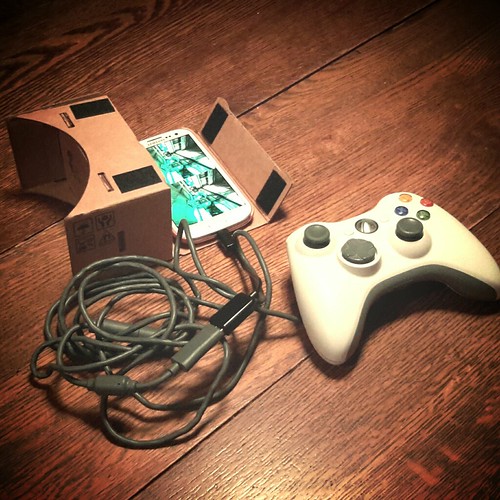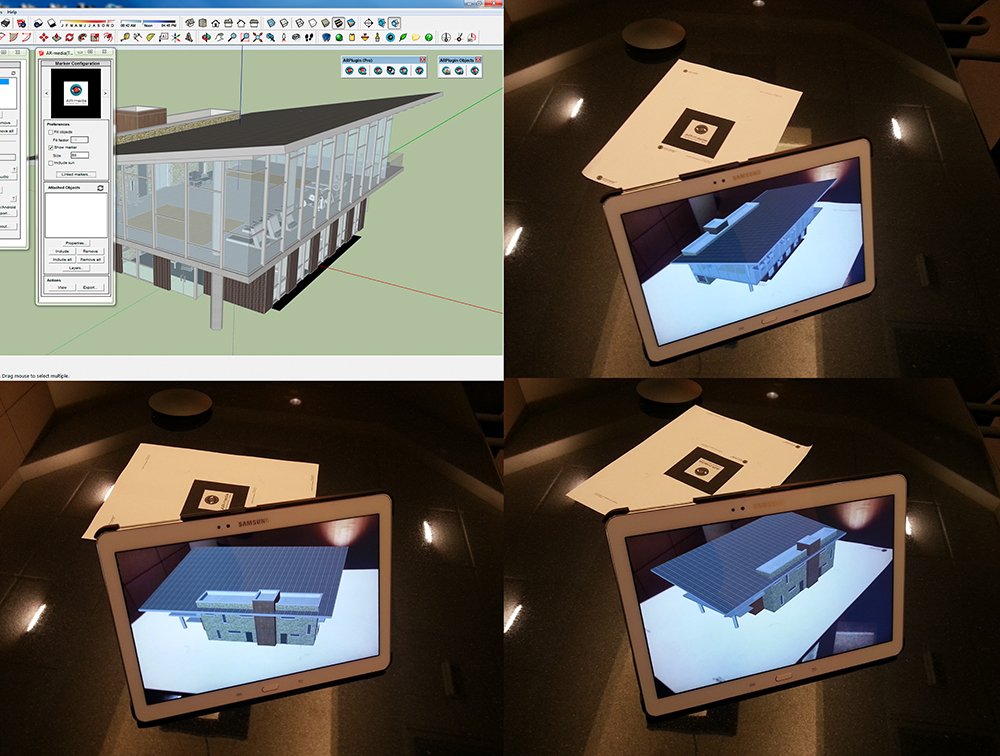What is AR, and why should Architects care?
I was at the Siggraph conference in August and Virtual Reality (VR) and Augmented Reality (AR) was all the rage. While Google has decided to stop making their Google Glass, they are in the minority (although I think we haven’t heard the last on this from the gentle giant) as manufacturers all over are jumping on the bandwagon from the highly publicized Facebook purchase of the Oculus Rift goggles, to the very recent announcement of the Microsoft’s Hololens.
Let’s start with a clarity of definitions. VR is the more identifiable format, one that we’re all familiar with from classic science fiction from the venerable Lawnmower Man to The Matrix where we are immersed (either in our mind or via some vision device like goggles) in a virtual world.
AR is a little more sublime in that the key is the “augmented” aspect of the moniker. By design, AR layers on certain pieces of virtual information over the real world. My first memory of exposure to this idea was from Terminator movie’s HUD (head’s up display):
In actuality, researchers have been working on this technology for a vast array of more innocuous reasons, the chief one being as an aid for learning. The theory being, instead of reading through a book which has a machine’s assembly instructions, for instance, the AR could just walk you through the assembly sequence as you do it, prompting you with every move:
Brilliant right? Well we’re seeing a lot of that already in architecture. Simple little things, like 3D plugins where you use your tablet as a viewport & use it to track a real object (in this case a cardboard marker) which links to a virtual object. When you move the marker in the real world, the model moves in the virtual world:
Clearly, there is a lot of benefit here for our profession. The notion that a client can better understand their building by whatever means, is a great thing, either viewing a tablet in a conference room, and standing out at the site where overlays the design on an empty site. The possibilities have no end.
This also has a lot of promise in the field, imagine when an Architect walks onto the site with AR glasses and overlays the BIM model on the construction. One could cycle thought the different layers (MEP, structural, etc.) or check the fenestration (That’s not where those mullions go!) or any number of issues without ever looking at the drawings.
That’s the good side. Here’s the scary side, and why I’m writing this post. How does the profession address the “art” of our design when anyone walking down the street can overlay whatever imagery they want on buildings? For instance, like themes on a phone, what happens to architecture when someone can chose to clad their world in a procedurally modeled Victorian skin of brick and iron or installs a LEGO filter that reduces all buildings to a series of interlocking blocks?
Moreover, who has the right to interfere with that space? If Google, who makes the bulk of their profit from advertising, owns your access to that world (i.e. via a viewing device they produce), they may well overlay little signs on restaurants detailing their reviews, but what if they start selling space on buildings they don’t own as advertising?
This also lends itself in the extreme, where virtual vandalism can manifest. Artists and interest groups, like Krzysztof Wodiczko, have long used projection as a medium of creating controversy and protest:
So where does this all lead? As architects, I see us as stewards of the urban fabric and the built form, experts in a craft and a profession that the public interest relies very heavily on. Increasingly, that form may not be entirely physical, and we’ll need to recognize this. For years we’ve debated the role of the architect, and how we’ve slipped from the penultimate “master-builder” with the resulting loss of control that new role engenders. As I see it, this is one of the next big ways in which the profession will be transformed. It may take a generation, but it’s coming and I’d like to see more of a debate of how the profession will embrace it, before it’s thrust upon us.





